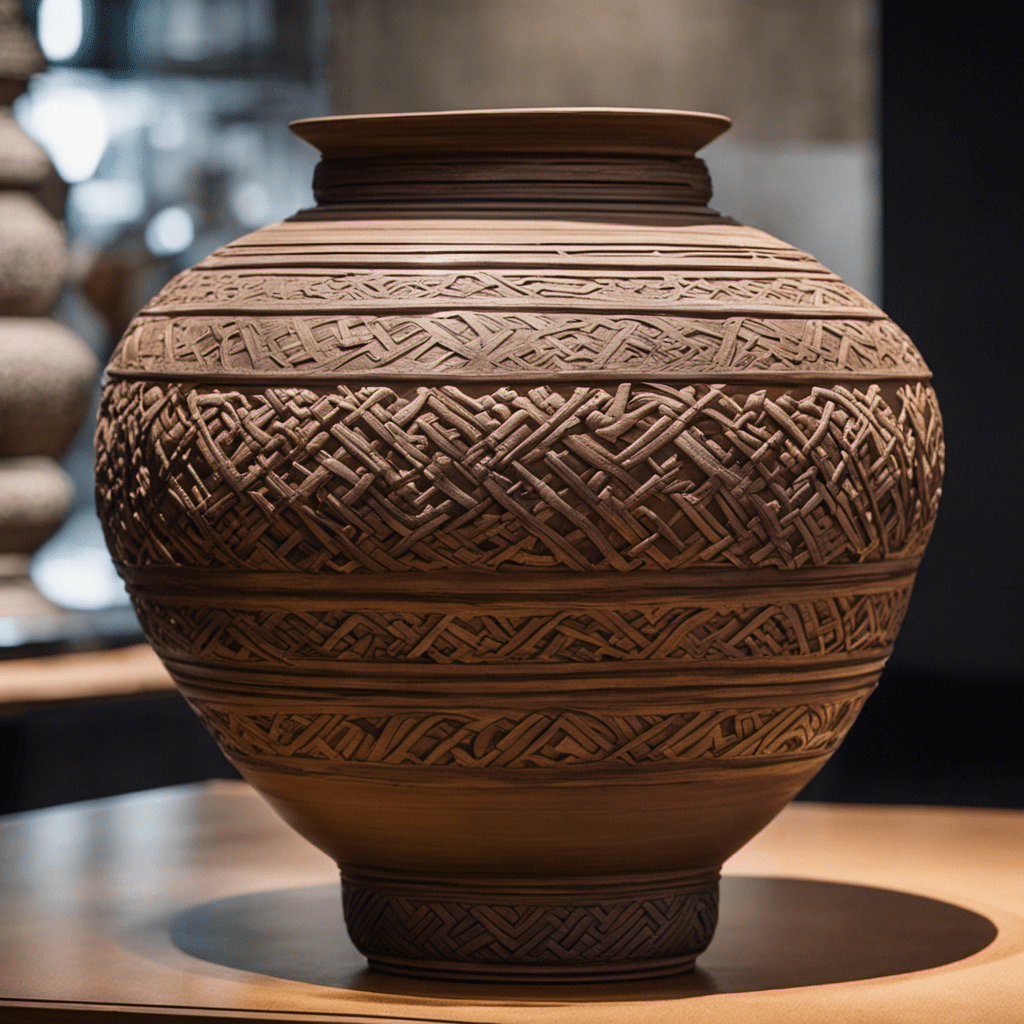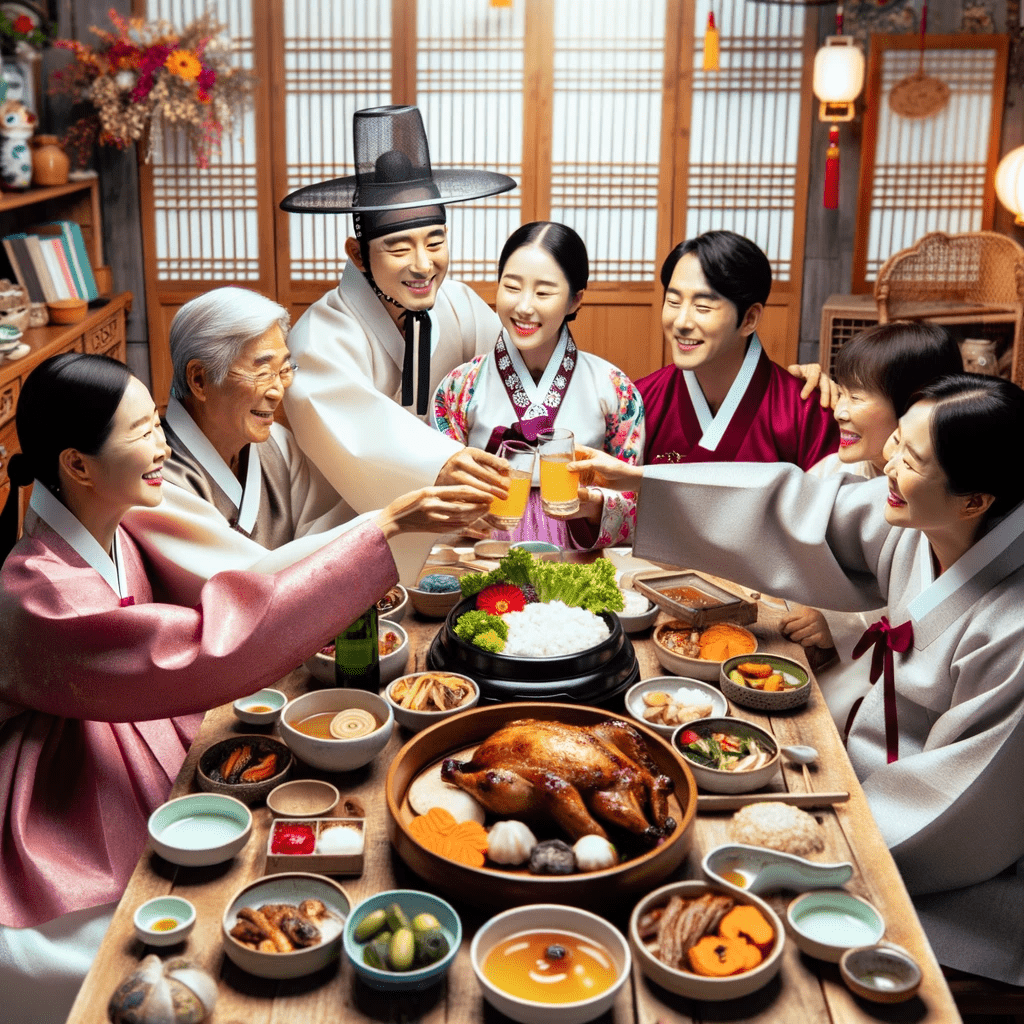Unveiling the timeless artistry of Onggi Pottery, this article delves into the rich heritage and cultural significance of this ancient craft.
With a history spanning over 500 years, Onggi Pottery Village in Ulsan, South Korea, stands as a testament to the enduring craftsmanship and traditional techniques employed by its skilled artisans.
Through in-depth exploration and first-hand experiences, readers will gain insight into the artistry, cultural importance, and techniques behind Onggi Pottery, a captivating journey into the heart of Korean pottery tradition.
Key Takeaways
- Onggi Pottery Village is a historic site in Ulsan, South Korea, known for producing traditional Korean pottery for over 500 years.
- The pottery is made using locally sourced clay and traditional firing techniques, and it is essential for Korean cuisine due to its durability and temperature-regulating properties.
- Visitors to Onggi Pottery Village can explore onggi culture and its significance through activities and experiences such as kimchi making, pottery-making, and sampling kiln-baked potatoes.
- Onggi Pottery Village is easily accessible by various modes of transportation, including trains and buses from major cities in South Korea.
History of Onggi Pottery
The history of Onggi Pottery can be traced back over 500 years, when it first originated in Ulsan, South Korea, using locally sourced clay and traditional firing techniques.
Onggi pottery has evolved over time, adapting to the changing needs and tastes of Korean society. From its humble beginnings as storage containers for food and fermentation, onggi pottery has become an integral part of Korean culture and cuisine.
Its cultural significance lies in its practicality and durability, as well as its ability to regulate temperature during fermentation processes. Onggi pottery also represents the traditional craftsmanship and artistic skills of Korean artisans, who continue to preserve this ancient craft.
The evolution and cultural significance of onggi pottery make it a unique and cherished aspect of Korean heritage.
Traditional Techniques of Onggi Pottery
During the production of Onggi pottery, traditional techniques are employed to shape and fire the clay, preserving the heritage and craftsmanship of Korean artisans.
The use of traditional firing techniques ensures that each piece of pottery is unique and reflects the rich history of the craft.
Local clay sources are essential in creating authentic Onggi pottery, as they contribute to the durability and temperature-regulating properties for which it is renowned.
The connection to local materials and techniques fosters a sense of pride and cultural identity among the artisans, as they continue to uphold and pass down these traditional methods.
The combination of traditional firing techniques and local clay sources not only produces functional and beautiful pottery but also serves as a testament to the enduring legacy of Onggi pottery in Korean culture.
Significance of Onggi Pottery in Korean Culture
Onggi Pottery plays a crucial role in Korean culture, serving as a symbol of heritage and a vessel for preserving traditional culinary practices. Its significance in Korean cuisine cannot be overstated, as onggi pottery has been used for centuries to ferment and store various food items such as kimchi, soy sauce, and doenjang (soybean paste). The unique properties of onggi pottery, such as its porous nature and ability to regulate temperature, contribute to the preservation and flavor enhancement of these food products. Moreover, onggi pottery is not only significant for its culinary purposes but also as a sustainable art form. The production of onggi pottery involves locally sourced clay and traditional firing techniques, making it an environmentally friendly and culturally valuable craft. Its continued use and appreciation ensure the preservation of Korean culinary traditions and sustainable artistic practices.
| Significance of Onggi Pottery in Korean Cuisine | Onggi Pottery as a Sustainable Art Form |
|---|---|
| – Used for fermenting and storing food items | – Made using locally sourced clay |
| – Enhances flavor and preserves food | – Utilizes traditional firing techniques |
| – Symbolizes Korean culinary traditions | – Environmentally friendly production |
| – Contributes to the preservation of heritage | – Culturally valuable craft |
Exploring Oegosan Onggi Pottery Village
While visiting Ulsan, South Korea, one can immerse themselves in the rich history and cultural significance of Oegosan Onggi Pottery Village. This ancient craft, dating back over 500 years, showcases the traditional Korean pottery known as onggi.
The village is a vibrant community of artisans who create jars, bowls, and pots using locally sourced clay and ancient techniques of firing. The cultural significance of onggi pottery in Korean cuisine cannot be understated, as it is essential for the fermentation process of foods like kimchi.
Visitors to Oegosan Onggi Pottery Village can explore the history and significance of onggi through the museum and outdoor display area. Additionally, hands-on activities such as making clay plates and witnessing skilled onggi masters in action evoke an emotional response, immersing visitors in the beauty and craftsmanship of this ancient art form.
Onggi Museum: Preserving the Legacy
In order to ensure the preservation of the legacy of onggi pottery, the Onggi Museum actively collects, exhibits, and educates visitors about the historical and cultural significance of this ancient craft. Through its preservation efforts, the museum plays a crucial role in safeguarding the cultural heritage of onggi pottery for future generations. The museum showcases a wide range of onggi pottery pieces, highlighting the craftsmanship and techniques involved in their creation. Visitors can learn about the history and cultural significance of onggi pottery through informative exhibits and educational programs. By fostering an understanding and appreciation for this traditional craft, the museum contributes to the continued relevance and recognition of onggi pottery as an important part of Korean culture. The preservation of onggi pottery is vital in ensuring the legacy and cultural heritage of this ancient craft.
| Onggi Museum | Preservation Efforts |
|---|---|
| Collects | Onggi pottery pieces |
| Exhibits | Historical and cultural significance |
| Educates | Visitors about onggi pottery |
| Safeguards | Cultural heritage |
Hands-On Experiences at Onggi Pottery Village
Visitors to Onggi Pottery Village can engage in a variety of hands-on activities, such as making clay plates and other pottery items, providing them with a unique and interactive experience. This allows them to not only appreciate the traditional firing techniques of onggi pottery but also understand its significant role in Korean cuisine.
-
Traditional firing techniques of onggi pottery evoke a sense of heritage and craftsmanship, connecting visitors to the rich history of Korean pottery-making.
-
Onggi pottery’s role in Korean cuisine elicits a sense of cultural pride and appreciation, as it is essential for the fermentation and preservation of various food items like kimchi and soy sauce.
-
Engaging in hands-on activities at Onggi Pottery Village fosters a sense of creativity and accomplishment, allowing visitors to create their own unique pieces and forge a personal connection with this ancient craft.
Overall, the hands-on experiences at Onggi Pottery Village offer a multi-faceted encounter with the artistry, history, and culinary significance of onggi pottery.
Kimchi Making With Onggi Pots
A multitude of participants eagerly gather at Onggi Pottery Village to engage in the time-honored tradition of kimchi making, utilizing the exquisite craftsmanship of Onggi pots.
The process of kimchi making involves the fermentation of vegetables, typically cabbage, with various seasonings. Onggi pots, made from locally sourced clay using traditional clay preparation techniques, play a crucial role in this process.
The porous nature of these pots allows for proper air circulation, which aids in the fermentation process. Additionally, Onggi pots are known for their temperature-regulating properties, maintaining a stable environment for fermentation.
In recent years, there has been growing interest in the health benefits of using Onggi pots for fermentation. Studies have shown that the use of Onggi pots can enhance the microbial diversity of the fermented food, leading to improved gut health.
Unleashing Your Creativity: Making Clay Plates and Pottery
Participants at Onggi Pottery Village can unleash their creativity by making clay plates and pottery, showcasing their artistic skills and personal expression. This hands-on activity allows individuals to explore the ancient craft of pottery-making and delve into the world of clay modeling techniques.
The pottery workshops offered at Onggi Pottery Village are specifically designed for beginners, providing them with the necessary guidance and tools to create their own unique pieces. By engaging in this artistic process, participants can experience a sense of fulfillment and accomplishment as they mold and shape the clay into functional and decorative objects.
This interactive experience not only cultivates a deeper appreciation for the art of pottery but also allows individuals to tap into their creative potential and express themselves through their creations.
Taste the Tradition: Kiln-Baked Potatoes With Kiln-Dried Salt
The flavorful combination of kiln-baked potatoes and kiln-dried salt is a cherished tradition at Onggi Pottery Village. This unique culinary experience not only delights the taste buds but also showcases the rich cultural heritage of the region.
Kiln-baked potato recipes have been passed down through generations, creating a sense of nostalgia and connection to the past. The process of baking the potatoes in a kiln imparts a distinct smoky flavor and brings out the natural sweetness of the potatoes.
Additionally, the use of kiln-dried salt enhances the overall taste and texture of the dish. Apart from its gastronomic appeal, kiln-dried salt also boasts several health benefits, such as being rich in essential minerals and aiding in digestion.
Thus, the combination of kiln-baked potatoes and kiln-dried salt not only satisfies the palate but also contributes to overall well-being.
Mastering the Craft: Onggi Pottery Making Demonstrations
During the pottery making demonstrations at Onggi Pottery Village, skilled artisans showcase their expertise and impart their knowledge of this ancient craft. The Onggi pottery techniques displayed during these demonstrations provide a captivating glimpse into the rich cultural heritage of Korea.
As visitors witness the intricate process of shaping clay and the delicate art of glazing, they are transported back in time, appreciating the meticulous craftsmanship involved in creating each piece. The demonstrations also shed light on the market trends surrounding Onggi pottery, highlighting its enduring popularity and timeless appeal.
With its unique blend of functionality and aesthetic beauty, Onggi pottery continues to captivate collectors and enthusiasts alike, making it a highly sought-after art form. As spectators witness the artisans’ passion and dedication, they cannot help but develop a deep appreciation for this ancient craft and its enduring legacy.
How to Get to Onggi Pottery Village
To reach Onggi Pottery Village, visitors can take a train from Seoul to Ulsan, which typically takes around 2 hours, or opt for buses from Seoul, Daegu, or Busan, with travel times ranging from 1 to 4.5 hours. The train schedule provides a convenient option for those looking for a quick and comfortable journey. On the other hand, the bus routes offer flexibility and accessibility for travelers coming from different cities. The table below illustrates the estimated travel times for the various transportation options:
| Departure City | Travel Time to Ulsan |
|---|---|
| Seoul | 1 – 4.5 hours |
| Daegu | 1 hour |
| Busan | 4.5 hours |
With multiple transportation choices available, visitors can easily plan their trip to Onggi Pottery Village and explore the rich history and cultural significance of traditional Korean pottery.
Where to Purchase Onggi Pottery: From Masters to Online Platforms
From small-scale artisans to large online platforms, there are numerous options available to purchase Onggi pottery. This traditional pottery, created using age-old techniques, holds immense cultural significance. The artistry and craftsmanship of Onggi pottery evoke a sense of admiration and appreciation for the rich Korean heritage it represents.
-
Support local artisans: Buying Onggi pottery directly from small-scale artisans not only helps preserve traditional pottery techniques but also supports the livelihoods of these skilled craftsmen, ensuring the continuation of this ancient craft.
-
Authenticity and quality: Purchasing Onggi pottery from reputable online platforms guarantees the authenticity and quality of the pieces, allowing individuals to bring a piece of Korean culture into their homes.
-
Connection to history: Owning Onggi pottery allows individuals to connect with the history and traditions of Korea, showcasing the cultural significance of this ancient craft.
Frequently Asked Questions
What Are the Different Types of Pottery Items That Can Be Purchased at Onggi Pottery Village?
Different types of pottery items available at Onggi Pottery Village include jars, bowls, and pots, all crafted using traditional Korean pottery styles and techniques. These items are known for their durability and temperature-regulating properties.
Are There Any Age Restrictions for Participating in the Hands-On Activities at Onggi Pottery Village?
There are no age restrictions for participating in the hands-on activities at Onggi Pottery Village. Visitors of all ages can enjoy the experience of making clay plates and other pottery items under the guidance of skilled onggi masters.
Can Visitors Bring Their Own Clay to Create Pottery Items at Onggi Pottery Village?
Visitors to Onggi Pottery Village are not allowed to bring their own clay for creating pottery items. The village provides the necessary clay and materials for hands-on activities, ensuring a consistent and authentic experience for all visitors.
Are There Any Special Events or Festivals Held at Onggi Pottery Village Throughout the Year?
Special events and festivals held at Onggi Pottery Village throughout the year include pottery-making workshops, traditional pottery competitions, and cultural exhibitions. Visitors can also enjoy hands-on activities, explore different types of pottery, and purchase souvenirs from the gift shop. Age restrictions may apply.
Is There a Gift Shop at Onggi Pottery Village Where Visitors Can Purchase Souvenirs?
Yes, there is a gift shop at Onggi Pottery Village where visitors can purchase souvenirs. The shop offers a range of pottery items, including jars, bowls, and pots, made by skilled artisans using traditional techniques.
Conclusion
In conclusion, Onggi Pottery Village in Ulsan, South Korea offers a fascinating glimpse into the ancient craft of onggi pottery. With a history dating back over 500 years, this traditional Korean pottery is renowned for its durability and temperature-regulating properties.
Visitors to Onggi Pottery Village can immerse themselves in the culture and significance of onggi through museum visits, hands-on activities, and witnessing pottery-making demonstrations by skilled artisans.
With easily accessible transportation options, anyone interested in this unique pottery tradition can experience the rich heritage of Onggi Pottery Village.





0 Comments